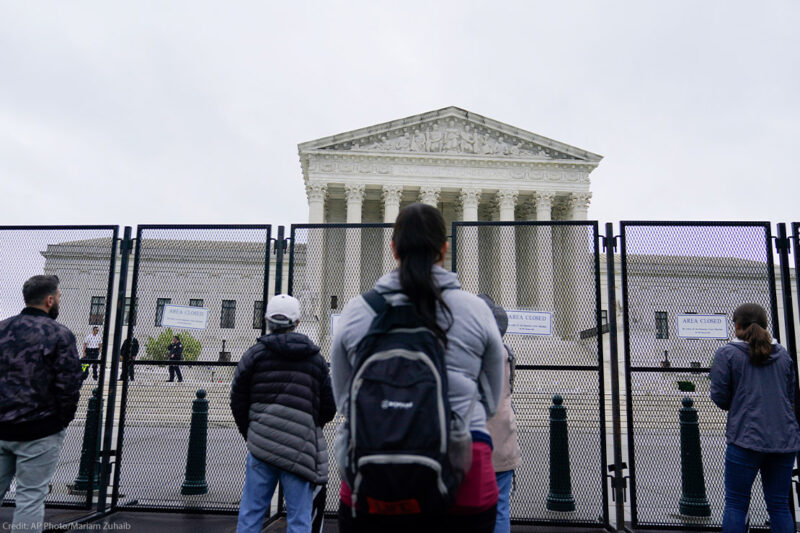Victims of Discrimination Have No Path to Justice Following Supreme Court Decision


When Rosa Parks refused to give up her seat on a bus in Montgomery, Alabama in 1955, our laws did not provide any recourse against the discrimination she faced. In the decades that followed, organizers and civil rights groups won key battles to expand our laws to protect against discrimination for Black people, women, and people with disabilities. Until recently, thanks to the groundwork laid by people like Parks, people who faced discrimination could seek damages for the emotional distress they endured. But the U.S. Supreme Court blocked that avenue for relief in Cummings v. Premier Rehab Keller, P.L.L.C, turning its back on our communities and effectively making such discrimination legal.
In its , the court guts key civil rights remedies by revoking the right of victims of race, sex, and disability discrimination to recover emotional distress damages ŌĆö essentially blocking victims from bringing lawsuits at all.
Until recently, people who faced discrimination could seek damages for the emotional distress they endured. But the U.S. Supreme Court blocked that avenue for relief.
Though often excluded from discussions of the courtŌĆÖs radical shift to the right, the egregious impact of this decision cannot be understated. After Cummings, discrimination cases that cannot show economic harm will never see the light of day. So, providers who turn away people with disabilities because they cannot be bothered to provide accommodations, or doctors who are openly racist to patients, would face no consequence for their obvious discrimination.
In its the └Ž░─├┼┐¬Į▒Įß╣¹, the NAACP Legal Defense Fund, and the National WomenŌĆÖs Law Center highlighted a number of discrimination cases that would be affected by this decision. In each of these cases, emotional distress damages are the primary tool used to seek justice for victims. In Franklin v. Gwinnett County Public Schools, for example, in which a young girl was sexually harassed by her teacher, the injuries required damages only for emotional, not economic, harm. Similarly, in Zeno v. Pine Plains Central School District, in which a Black student suffered racial harassment and assault for more than three years, damages that addressed the psychological harm on the student were the only way to hold the school accountable.
After Cummings, cases like these will be nearly impossible to bring. HereŌĆÖs what you need to know about this shameful decision.
What happened in this case?
Jane Cummings, who is deaf and legally blind, was denied services from a physical therapistŌĆÖs office ŌĆö Premier Rehab Keller ŌĆö because of her disability. The office refused to provide Cummings with an American Sign Language interpreter at her sessions, although they were required to under federal anti-discrimination laws.
Cummings was forced to find a different physical therapist, but filed a lawsuit against Premier Rehab for violating the anti-discrimination rules in the Rehabilitation Act of 1973 and the Affordable Care Act (ACA).
In her case, as is the case for many Americans who experience discrimination due to their identity, the lawsuit sought damages for emotional distress. Emotional distress damages are often critical to discrimination cases, compensating victims for lasting harms like anxiety, depression, and post-traumatic stress disorder.
What did the court say?
The issue, in this case, was not whether Cummings was discriminated against, but rather what to do in response to the discrimination she faced. The Supreme CourtŌĆÖs answer? Nothing could be done.
For the first time, the court held that emotional distress damages were not recoverable in a private action to enforce anti-discrimination laws. In its argument, the court applied contract law to hold that damages cannot include compensation for emotional suffering since emotional distress damages are not traditionally available in suits of breach of contract.
Despite routinely showing that discrimination can cause significant emotional damage, potentially affecting a personŌĆÖs stress levels, self-esteem, blood pressure, and overall mental health, the court claimed these harms do not warrant a remedy.
What does this mean for victims of discrimination?
The impact of this decision is far reaching. Practically, this decision means that while emotional injury is often the primary, and at times the only, harm caused by discrimination, victims will not be able seek justice.Without emotional distress remedies, many discrimination cases in progress will be thrown out, and future cases will not be taken up by lawyers at all.
While the facts of this case concerned disability discrimination under the Rehabilitation Act and the ACA, its ruling also applies to Title VI of the Civil Rights Act of 1964 (prohibiting race discrimination) and Title IX of the Education Amendments of 1972 (prohibiting sex discrimination). This means the decision will affect kids in schools, people who experience sexual harassment and abuse, and many other victims of race and sex discrimination.
Cummings not only prevents these individuals from seeking justice, but also leaves them at greater risk under the weakened anti-discrimination laws. In the past, the strength of these laws has relied on the deterrent effect of lawsuits brought by private actors. Now, many victims will be unable to bring a case, making it all the more difficult to hold violators of these laws accountable.
With this decision, key wins fought for by civil rights activists like Rosa Parks are stripped away. Rosa Parks suffered no economic harm from sitting in the back of the bus. She lost no job. The bus still took her where she needed to go. But the injury she suffered ŌĆö the indignity and stigma of being segregated and relegated to the back ŌĆö was real. Now, the court has effectively told Rosa Parks, ŌĆ£So what?ŌĆØ


